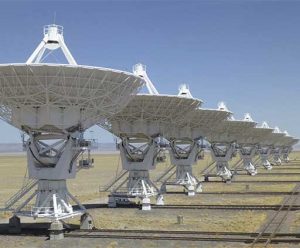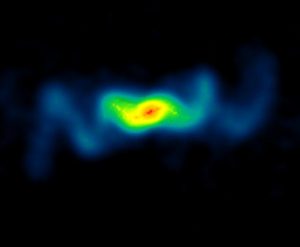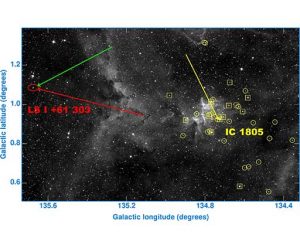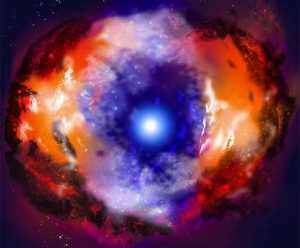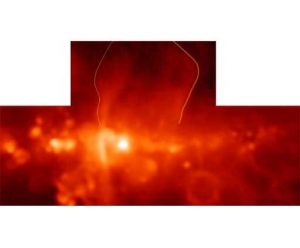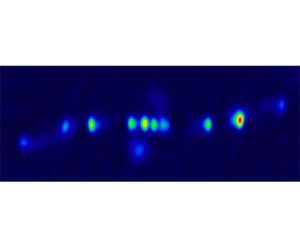Astronomers have discovered three brown dwarfs — enigmatic objects that are neither stars nor planets — emitting radio waves that scientists cannot explain. The three newly-discovered radio-emitting brown dwarfs were found as part of a systematic study of nearby brown dwarfs using the National Science Foundation’s Very Large Array radio telescope.
Gigantic Cosmic Corkscrew
Making an extra effort to image a faint, gigantic corkscrew traced by fast protons and electrons shot out from a mysterious microquasar paid off for a pair of astrophysicists who gained new insights into the beast’s inner workings and also resolved a longstanding dispute over the object’s distance.
Stellar Pair Shot Out from Its Birthplace
Astronomers studying data from the National Science Foundation’s Very Long Baseline Array and other telescopes have concluded that a binary pair of stars forming an energetic microquasar was blasted out of the cluster in which it was born by a supernova.
Radio Telescopes Reveal Youngest Stellar Corpse
Astronomers using a global combination of radio telescopes to study a stellar explosion some 30 million light-years from Earth have likely discovered either the youngest black hole or the youngest neutron star known in the Universe.
Giant ‘Lobe’ in Galactic Center
An astronomer using the National Science Foundation’s Robert C. Byrd Green Bank Telescope (GBT) has discovered that two prominent features rising out of the center of the Milky Way Galaxy are actually the distant edges of the same superstructure. This object, which has the appearance of a “lobe,” may have been formed during an epoch of furious star formation.
VLBA Movie of Mysterious Microquasar
Astronomers have made a 42-day movie showing unprecedented detail of the inner workings of a strange star system that has puzzled scientists for more than two decades. Their work is providing new insights that are changing scientists’ understanding of the enigmatic stellar pairs known as microquasars.






